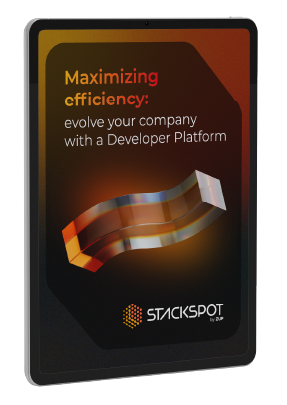Cloud-native application design helps enterprises redefine legacy apps as resilient, agile and scalable. But there’s more than one way to modernize an app. Infrastructure as a Service (IaaS), Platform as a Service (PaaS), and Software as a Service (SaaS) are some of the most popular models — and you should know how they work.
Why does it matter? IaaS, PaaS, and SaaS adapt to organizational needs, but they shape digital infrastructure in distinct ways. The choice you make shouldn’t just be a random pick. Your decision has a direct impact on whether your modernization succeeds.
Choosing Perspectives: Infrastructure vs. Platform vs. Software
IaaS, PaaS, and SaaS have confusingly similar acronyms, but they’re pretty different:
Infrastructure as a Service (IaaS)
The IaaS model offers computing, storage, and networking resources on demand. It offers a pay-as-you-go framework that lets you scale IT infrastructure without managing data centers yourself.
Software as a Service (SaaS)
With the SaaS model, you subscribe to applications hosted on cloud servers. Your teams can use services and software without ever installing anything locally. This model commonly powers office software, messaging tools, and CRM systems.
Platform as a Service (PaaS)
The PaaS model gives you a complete development and deployment environment in the cloud. It includes infrastructure but adds middleware, development tools, and business intelligence. Your devs can build, test, deploy, manage, and update applications without worrying about what’s happening under the hood.
The Big Picture
- IaaS: The service provider provides infrastructure, mostly virtualized and you are responsible for managing the software, from the operational system (Linux for example) to the services hosting business applications (HTTP servers for example).
- PaaS: The service provider provides a platform to build and/or run business applications, and you are responsible only for building, deploying and operating business applications, but no infrastructure management, including operational systems and services.
- SaaS: The service provider provides a full-featured and ready to use application, and you aren’t responsible for anything, just use (and pay for it).
Matching Cloud Models and Use Cases to Modernization Goals
You may have noticed that these models aren’t outright competitors. They can overlap, particularly in how you utilize them. When picking a cloud strategy to fit your modernization journey, consider your:
Typical Business Objectives and Workloads
Where you are in your modernization journey says a lot about which model you should choose. For instance, IaaS is excellent for maintaining flexible infrastructure control while you migrate your existing applications and workloads to the cloud.
PaaS is your best bet if you’re still developing and need to move quickly but safely. SaaS, on the other hand, works best for non-core applications you’d instead of building in-house.
Current and Future Cost Constraints
All cloud models can incur costs. But there are major trade-offs.
IaaS lets you control costs only if you commit to consistent management. SaaS costs are predictable, but you might pay more for other services due to lacking customizability. PaaS cuts development costs by abstracting complex infrastructure tasks and allows you to build custom cost-controlling solutions.
Need for Development Speed and Agility
SaaS only speeds development indirectly by freeing up engineering resources. IaaS helps you customize and adapt, but its management overhead can slow implementation and iteration.
PaaS is the clear winner here because rapid, agile iteration is the whole point. You get ready-made components you can iterate on and context-aware AI tools to help you use them effectively. Such elements serve as building blocks for everything else.
Scalability and Elasticity Objectives
SaaS tools scale automatically. The problem is that you have very little to say about how they do it.
IaaS is far more flexible. You can scale up and down based on demand while maintaining a fine-grained degree of control.
PaaS lets you roll your scalability. In addition to built-in auto-scaling features at the platform level, you can build flexible services more easily using composable infrastructure pipelines and components.
Consume innovation, begin transformation
Subscribe to our newsletter to stay updated on the latest best practices for leveraging technology to drive business impact
Evaluating Cloud Models for Growth
Scalability and flexibility are tricky. PaaS lets you define your growth journey, but the simplicity of IaaS and SaaS models is effective in certain use cases.
The answer might be to choose a hybrid approach. For instance, many enterprises use SaaS services as stand-ins until they finish modernizing their apps. In such a case, you’d want to prioritize SaaS offerings with flexible subscription terms and minimal setup.
IaaS works the same way. Cloud providers’ service terms are best suited to specific situations, and using multiple vendors may help you cut costs. However, the big thing to watch out for is when your vendor portfolio bogs you down in unnecessary complexity.
Platforms act like the glue that unifies cloud models. They help you enforce uniform organizational standards, harmonize APIs, and build tighter iterative feedback loops. Instead of your left hand (SaaS) not knowing what the right hand (IaaS) is doing, you can use an orchestrator (PaaS) to keep everything working together. This strategy helps you stay on track without feeling overly constrained.
Cost Analysis: Budgeting for Your Digital Transformation
Modernization is a transitional undertaking, and budget realities evolve like anything else. While IaaS and SaaS offer expense predictability, they fail to anticipate the blind spots: what you’ll pay to build the systems that tie everything together.
Only the PaaS model reliably minimizes app development expenditures. IaaS and SaaS have the potential, but their goals lie elsewhere. One Forrester study found that using a PaaS product for modernization could reduce infrastructure costs by 40%.
Safeguarding Applications in Different Cloud Models
Almost half of all breaches happen in the cloud. It’s reasonable to wonder which model offers the best security, but the situation is more complex.
IaaS and SaaS products offer a raft of security measures. This sounds great for organizations with strict compliance requirements. However, in 2023, SecurityScorecard found that 98% of organizations had at least one vendor breached within the last two years.
PaaS inherits security features from the Platform, but these are just a starting point. More control lets you build for verifiable compliance instead of relying on a provider’s security measures.
StackSpot Cloud Services
Based on everything you’ve known so far to modernize your cloud service, we have an option that runs and implements a cost-effective infrastructure.
StackSpot Cloud Services is a robust and reliable ecosystem for deploying and running applications, with contextual FinOps analysis, cloud resilience with alerts, and security best practices.
With StackSpot CS, you can abstract and simplify your cloud journey, optimizing costs and consumption, have over 400 security guardrails and a FinOps report for cost efficiency.
Conclusion
IaaS, SaaS, and PaaS models play fundamental roles in app modernization. But it would help if you didn’t view the choice as an either-or proposition. Instead, take a nuanced approach that builds on the strengths of all three selectively. Starting with a platform streamlining development can make leveraging IaaS and SaaS models easier.
Take the opportunity to explore our StackSpot Cloud Services page and the resources available on the Platform.












